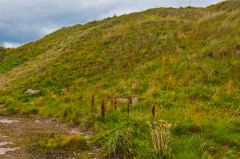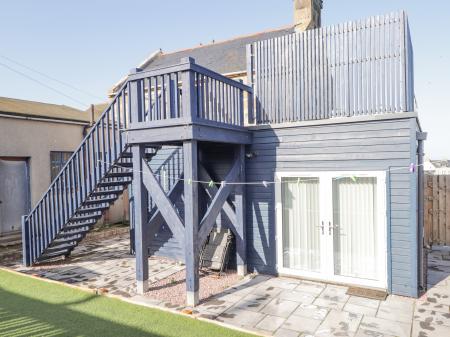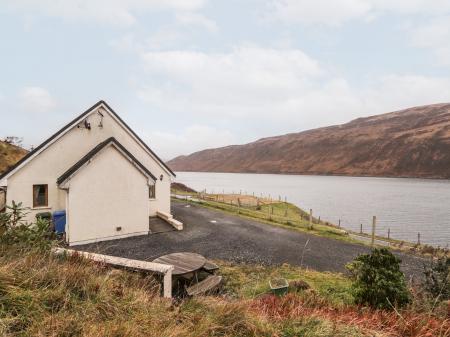
The area enclosed by the Pictish fortifications covers about three hectares, which makes Burghead the largest promontory fort in Scotland from the historic era. It seems clear that Burghead fort was one of the major centres, probably the capital, of a Pictish kingdom covering modern Moray. It was in use from about 450 to 850 AD, when it was destroyed by fire.
Archaeological excavation has revealed that the earthwork defences were augmented by a huge wooden palisade. Within the enclosure is a well, sometimes called the Roman Well, cut down into the solid rock below the modern town. The well may have been created to provide a water supply for the inhabitants of the fort.

The modern town has encroached on the fort, but this does little to obscure just how large and impressive it must have been in its heyday. Numerous examples of Pictish carvings have been found on the site, many of them incorporating depictions of bulls. Only six of these 'Burghead Bull' stones now survive, dating to the 6th or 7th centuries, and one of these is on display in the Visitor Centre museum.
I was far more captivated by Burghead than I thought I would be. The site is intriguing, though it can be hard to really make sense of the earthwork defences.

You can scramble all over the earthworks, but to really get a sense of the site I highly recommend popping into the little museum in the Burghead Visitor Centre, which is located in a former coastguard lookout near the top of the site. I was pleasantly surprised by just how much was packed into this little museum, and it really helped get the larger picture of Burghead's history.



 We've 'tagged' this attraction information to help you find related historic attractions and learn more about major time periods mentioned.
We've 'tagged' this attraction information to help you find related historic attractions and learn more about major time periods mentioned.




